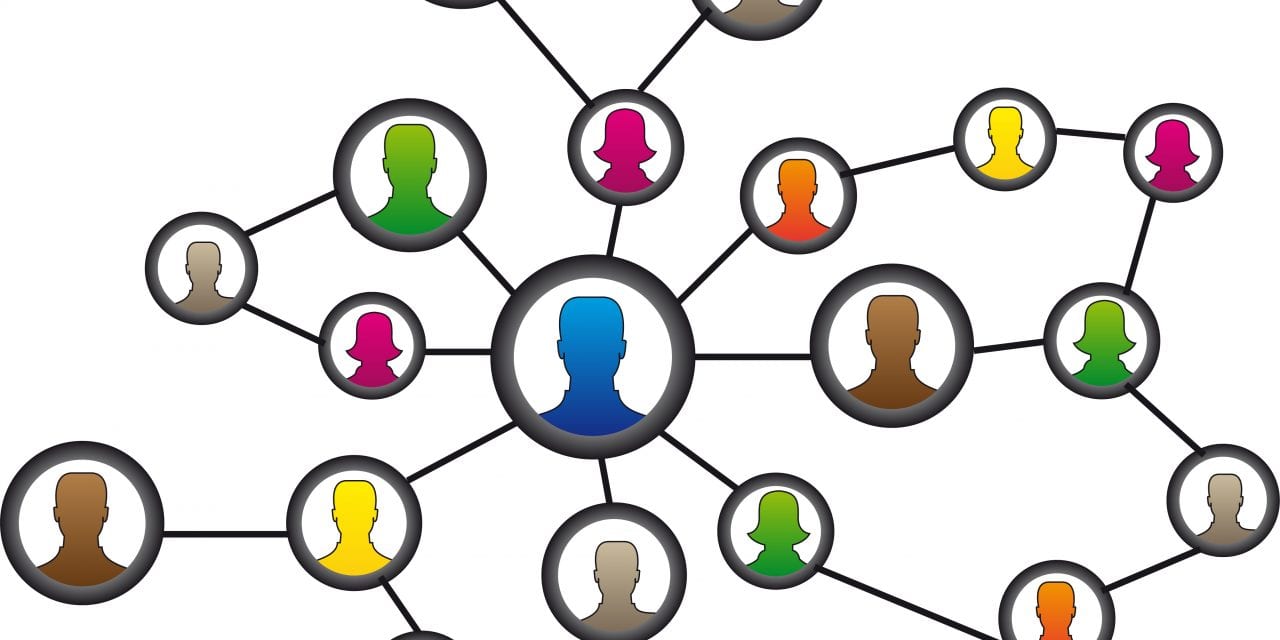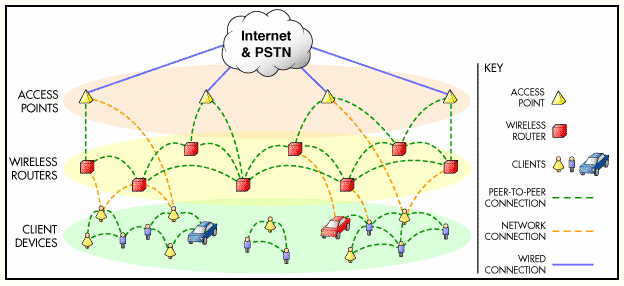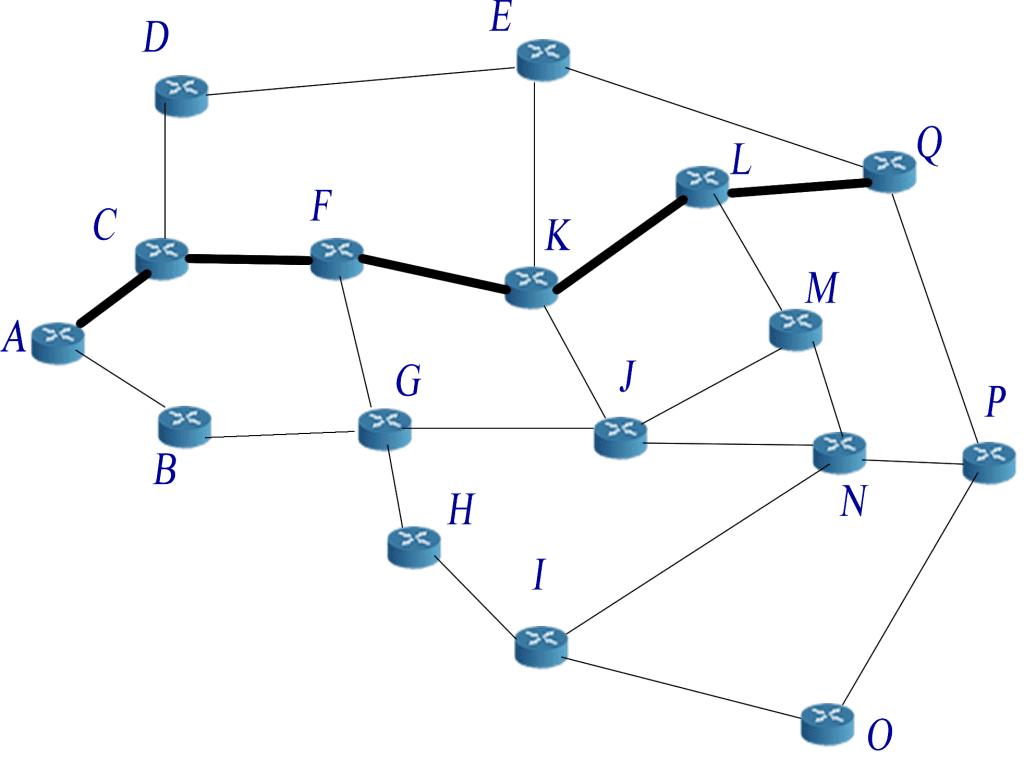Last updated on October 5th, 2024 at 01:03 pm
Mesh Networks are best described as a redundant Network in which every user or node connected to the network aids in the distribution of data across the network. In other words you connect to the network via any form of message transfer protocol Bluetooth, LAN, TCP/IP and every message you send jumps from sender to node1, node2 .. up to N Nodes till it finally is delivered to the destination Node who would be the receiver.
The reason for Mesh networks gaining so much popularity is that they do not need the internet to transmit data. WHAT you ask! Yes, technically the mesh network has a mapping of every user/ node in the network connected at that moment in time. This when user A would like to Message user Z the network figures out where and how to route the message. Think about every node in the Mesh Network acting as a DNS server routing the message to the next node in the network.
Possibly this diagram describes it better.
With the recent floods in Chennai, India where mobile networks were down, or with Brazil Shutting down whats app. Mesh networks come into play. Though this technology is relatively at a nascent stage, the possible potential implications are significant.
Mesh Network Fundamentals
Fundamentally you can divide mesh networks into two variations, one which has an exclusive infrastructure and another that uses the clients. A mesh network that is built using dedicated access points and wireless routers utilize the dedicated infrastructure. These are most often used by the military as they need to have a dedicated network setup in the geographic area they are operating in. These networks are more reliant and are robust with the ability to scale as the geographical region grows.
The Client-side mesh network utilizes every client connected to the network to bounce off messages to the next closest Mesh node/user and then gets the message to the final recipient. Think about this as a peer-to-peer network just like how BitTorrent and LimeWire function. Instead of using every user in the network to download a file here each node in the network is functioning to relay the message to the next user. In this type of network each user who joins the network makes the network stronger, increasing the network coverage and more robust making its reliant.
The primary advantage of a mesh network is that it does not need every user to be directly connected to the internet, users can use Bluetooth, or even set up a Local area network (LAN), Wide area network (WAN) the only thing that is a must is to have one user to be connected to the internet IF they want to send messages outside their network.
Issues with Mesh Networks –
Battery/ Device Power – The primary issue with mesh network is that it’s very chatty and can use up your device battery considerably. Even if you are not actively using your device it is being actively used to receive and transmit messages that are not intended for you. .
Reliability – Reliability of your message reaching the sender is always a question. Mesh Network more than other networks has an issue with reliability. This is because the structure of the mesh is changing and is constantly evolving. As this emerging technology evolves these networks become more self-forming and self-healing.
Let’s at an example:
Take a class of 10 students sitting in the break room, one of them finds a new mesh networks app and gets all his friends to download it. They all turn on their Bluetooth and some of them are connected to the internet as well.
So now they can message each other easily as they are all in close proximity and if in a group chat setting goes to all of them and direct messages go to each intended client. But once they leave home there are no longer in close proximity to each other, therefore the network now needs to evolve to destroy the old map and understand how these 10 students are now connected to the network. It’s easiest at this point if they are connected to the internet but if not.
The network will then have to find another user lets take it that one of the students does not have internet but if he turns on his Bluetooth, his neighbor also has the same mesh network application and has his Bluetooth on, but if his neighbor is connected to the internet. The student is now sudo online and is chatting with his friends.
Security – Security has always been an issue with peer-to-peer networks. Since every message is routed via multiple clients it is possible that these messages can be intercepted. However, there is a possibility to encrypt and decrypt these messages by using a private key that can be shared between the two parties.
That’s all for now folks !!
There is an app currently in the google play store and the iOS store that uses mesh networks it’s called the Fire App.
Recommended Reading:



















